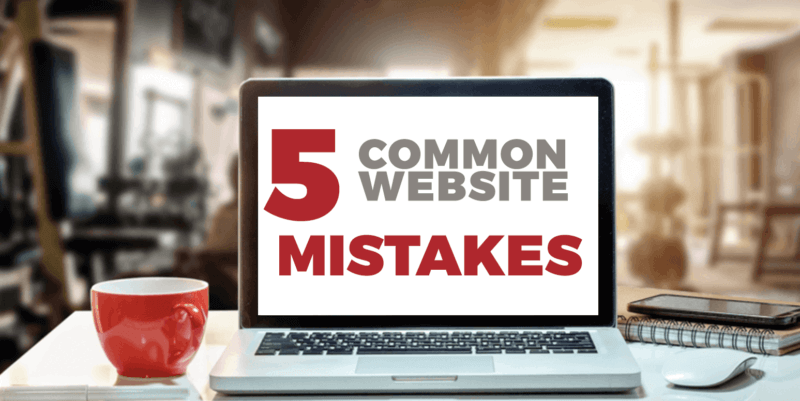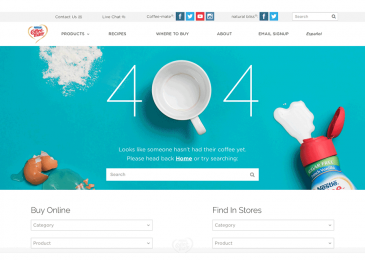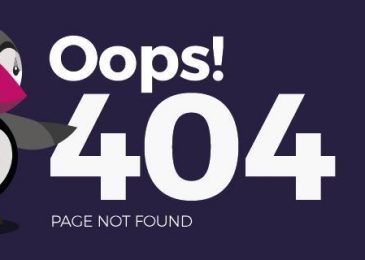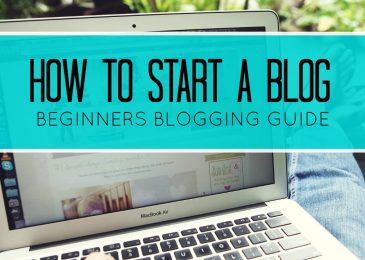Luckily, avoiding “website don’ts” is much easier than finding love in a hopeless place. In this post, I’ll outline the 10 biggest mistakes you could make when setting up a website for your small business. Avoid these pitfalls and you’ll be on your way to turning visitors into devoted customers.
Not Thinking About Readability
Not only does your copywriting need to be sweet and simple, but the design also has to be easy on the eyes.
And I don’t just mean nice to look at; it also has to be easy to read.
When you use a website builder, you have free reign to customize your website as you wish, but this doesn’t mean you should part with best practices. To make sure your users don’t get turned off by your design, stick to these rules:
- Keep Your Font Sizes Consistent — Larger font sizes are a good way to say, “This is important, so pay attention.” Smaller font sizes should be used for more in-depth information. When building your website, don’t go hog wild and use a bunch of different sizes. Stick to three or four sizes.
- Consider Your Fonts — Papyrus may look cute on your kid’s 5th birthday party invite, but it doesn’t look great on your website. Luckily, most website builders themes will only use fonts that designers have already vetted for readability and looks. One important tip: Sans-serif fonts — the ones without the extra little flourishes — are generally easier to read on the web.
- Choose Contrasting Colors — When selecting a color palette for your website, make sure the background images don’t drown out your font. Readability has to be the first priority. If you’re design challenged (no shame in admitting that, by the way), Remixer comes with preset color mixes so you don’t have to worry about the subtle differences between Seafoam and Aqua.
Slow Server Times
Did you know customers will only wait four seconds for a site to load before clicking out of the website, according to a study by Akamai Technologies? That means if you want to keep your customers interested, you need to make sure your site loads whip fast.
The good news is when you build your site with Remixer, you are working with a product that is configured to make load times faster. Remixer’s static pages load whip-fast compared to dynamic ones.

Outdated Information and/or Design
I know we just talked about brisket, but building a website is not like making slow-cooked pork. You can’t set it and forget it! Your website requires regular updates and maintenance for a variety of reasons.
- Updated Information Helps Customers — If you let your website information get outdated, it will be difficult for customers to find you, order from you, and remain a loyal customer. Don’t leave them hanging!
- It Keeps Google Happy — Google ranks websites based on a huge algorithm. One major driver of rankings: how fresh and robust is your site’s content? This means you need to frequently add new content to your site (blog posts, anyone?) and routinely spruce up your older pages and posts.
- Updated Design Keeps Your Brand Relevant — The tech world is constantly innovating, and you need to stay in the game when it comes to design trends and best practices. For example, here’s how Google and Facebook, two of the world’s most popular websites, looked when they first launched. Imagine how successful they would have been if they never updated their look and feel. Yeah, it’s not a pretty picture.
Failing To Make A Responsive Website
This is the ultimate beginner’s mistake. So what is a responsive website anyway?
Simply put, it’s a website that responds to its environment to give the user the best possible viewing experience. In other words, if a user comes searching for your website on a mobile phone, then the site’s layout will display in a different, more accessible way than if they were visiting the site on a desktop.
We’ve gone in-depth on why mobile-friendly website design matters here on the blog before. But here are the simple facts: 61 percent of users who have trouble accessing a mobile site are unlikely to return. Of those, 40 percent will seek out a competitor’s site instead. And if you don’t create a mobile-friendly website, Google’s going to ding you too.
The takeaway?
When choosing a website builder or platform to create your website, make sure you pick one that offers responsive designs. You don’t want to mess around with a stagnant design that will drive away mobile visitors.
Falling For Search Engine Optimization Myths
Every new business owner hopes to create a website that will sit on the top of the search results on Google, Bing, Yahoo, and every other search engine. And they hope to rank for more than just one keyword.
However, the truth of the matter is that a good SEO strategy takes time, smarts, and money. Plus, it’s impossible to successfully optimize your homepage for hundreds of keywords. That’s just not how the internet works, and if you try to cut corners, Google knows where you live.
Seriously, it knows.
A better strategy is to think about the top keyword for your website and optimize your content to rank for that keyword. Here are a few suggestions:
- Write Long-Form Content — Once upon a time, stuffing your content with your top keyword would help you rank in the search results. Gone are those days, and just like on that first date we talked about earlier, you’ll actually be penalized for trying too hard. These days, it’s better to simply write your content for the user. Be as comprehensive and helpful as possible and Google will reward you.
- Structure Your Content with Heading Tags — Heading tags — the top-down <h1> to <h6>s — are often seen as a “meh, not that important” sort of thing, but they really do matter. Headings give structure to your pages, making it easier for both readers and Google bots to consume your content. To get the most SEO bang for your buck with headings, follow this guide from Yoast.
- Add a Call-to-Action — Your homepage should have a clear call-to-action (CTA). Not only will it help direct your readers to do the thing you want them to do — buy your product, sign up for your service, or subscribe to your newsletter — but it will help Google focus on what is important to you.
Read more How to fix error 404 Not Found on your website
_______________________________________________________________________________
For more details about our seo service packages, pls contact us
BIGBIGSEO Team
Email: bigbigseo@gmail.com
Skype: bigbigseo
https://www.facebook.com/bigbigseo
Thank you!




